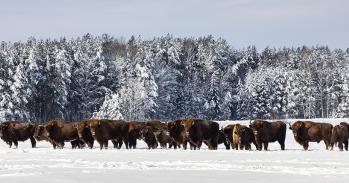
The augmented reality game, designed for mobile devices, allows users to capture, battle and train virtual creatures called Pokémon that appear on screen as if part of the real-world environment. But can the game's enormous success deliver any lessons to the fields of natural history and conservation?
The augmented reality game, designed for mobile devices, allows users to capture, battle and train virtual creatures called Pokémon that appear on screen as if part of the real-world environment. But can the game's enormous success deliver any lessons to the fields of natural history and conservation?
The basic facts and information about Pokémon Go make it sound like an incredibly successful citizen science project, rather than a smartphone game
Leejiah Dorward
A new paper by a group of researchers from the Universities of Oxford and Cambridge, UNEP World Conservation Monitoring Centre, and University College London (UCL) explores whether Pokémon Go's success in getting people out of their homes and interacting with virtual 'animals' could be replicated to redress what is often perceived as a decline in interest in the natural world among the general public.
Or, could the game's popularity pose more problems than opportunities for conservation?
Study author Leejiah Dorward, a doctoral candidate in Oxford University's Department of Zoology, said: "When Pokémon Go first came out, one of the most striking things was its similarity with many of the concepts seen in natural history and conservation. The basic facts and information about Pokémon Go make it sound like an incredibly successful citizen science project, rather than a smartphone game.
"We wanted to explore how the success of Pokémon Go might create opportunities or challenges for the conservation movement."
Co-author John C Mittermeier, a doctoral candidate in Oxford's School of Geography and the Environment, said: "There is a widespread belief that interest in natural history is waning and that people are less interested in spending time outside and exploring the natural world.
"Pokémon Go is only one step removed from natural history activities like bird watching or insect collecting: Pokémon exist as 'real' creatures that can be spotted and collected, and the game itself has been getting people outdoors. What’s going on here, and can we as conservationists take advantage of it?"
In the paper, the researchers explain that Pokémon Go has been shown to inspire high levels of behavioural change among its users, with people making significant adjustments to their daily routines and to the amount of time spent outside in order to increase their chances of encountering target 'species'. There is also evidence that users are discovering non-virtual wildlife while playing Pokémon Go, leading to the Twitter hashtag #Pokeblitz that helps people identify 'real' species found and photographed during play.
Pokémon Go, the researchers write, exposes users first hand to basic natural history concepts such as species' habitat preferences and variations in abundance. 'Grass Pokémon', for example, tend to appear in parks, while water-related types are more likely to be found close to bodies of water. There are also four regional species that are continent restricted: Tauros to the Americas, Mr Mime to Western Europe, Farfetch’d to Asia, and the marsupial-like Kangaskhan to Australasia. This differentiation captures a fundamental aspect of natural history observation – that exploring new habitats and continents will lead to encounters with different species.
And hundreds of people congregated near New York’s Central Park one night over the summer to try to find a rare Vaporeon – something that will sound familiar to birdwatchers used to similar gatherings to see a rare species.
However, the researchers caution that the success of Pokémon Go could also bring challenges: for example, it may be that this type of augmented reality – featuring engaging, brightly coloured fictional creatures – could replace people's desire to interact with real-world nature, or the focus on catching and battling Pokémon may encourage exploitation of wildlife. There has also been controversy in the Netherlands, where Pokémon Go players have been blamed for damage caused to a protected dune system south of The Hague.
Co-author Dr Chris Sandbrook, a senior lecturer at UNEP World Conservation Monitoring Centre and affiliated lecturer at the Department of Geography, University of Cambridge, said: "Just getting people outside does not guarantee a conservation success from Pokémon Go. It might actually make things worse – for example, if interest in finding a rare Vaporeon replaces concern for real species threatened with extinction. Real nature could be seen as just a mundane backdrop for more exciting virtual wildlife."
Dorward added: "One of the positive things about Pokémon Go is that there's a very low barrier for entry. As long as you have a smartphone, you can play – and the game itself does a lot of things for you. Finding ways to break down barriers to engagement with real-life nature is a priority for conservation. Pokémon are also relatable 'characters', whereas modern conservation tends to frame itself purely in scientific terms, which may be off-putting to many.
"There is something called the biophilia hypothesis, which suggests that people have an in-built affinity with nature and a desire to explore the natural world. If that’s one of the reasons Pokémon Go has proved to be so popular – because it’s a natural history proxy – then that could be a huge boost to conservation. It's possible that the desire to connect with nature is there and to get people to engage with conservation we just need to 'sell' it correctly."
The paper 'Pokémon Go: benefits, costs, and lessons for the conservation movement' is published in the journal Conservation Letters.

The text in this work is licensed under a Creative Commons Attribution 4.0 International License. For image use please see separate credits above.




